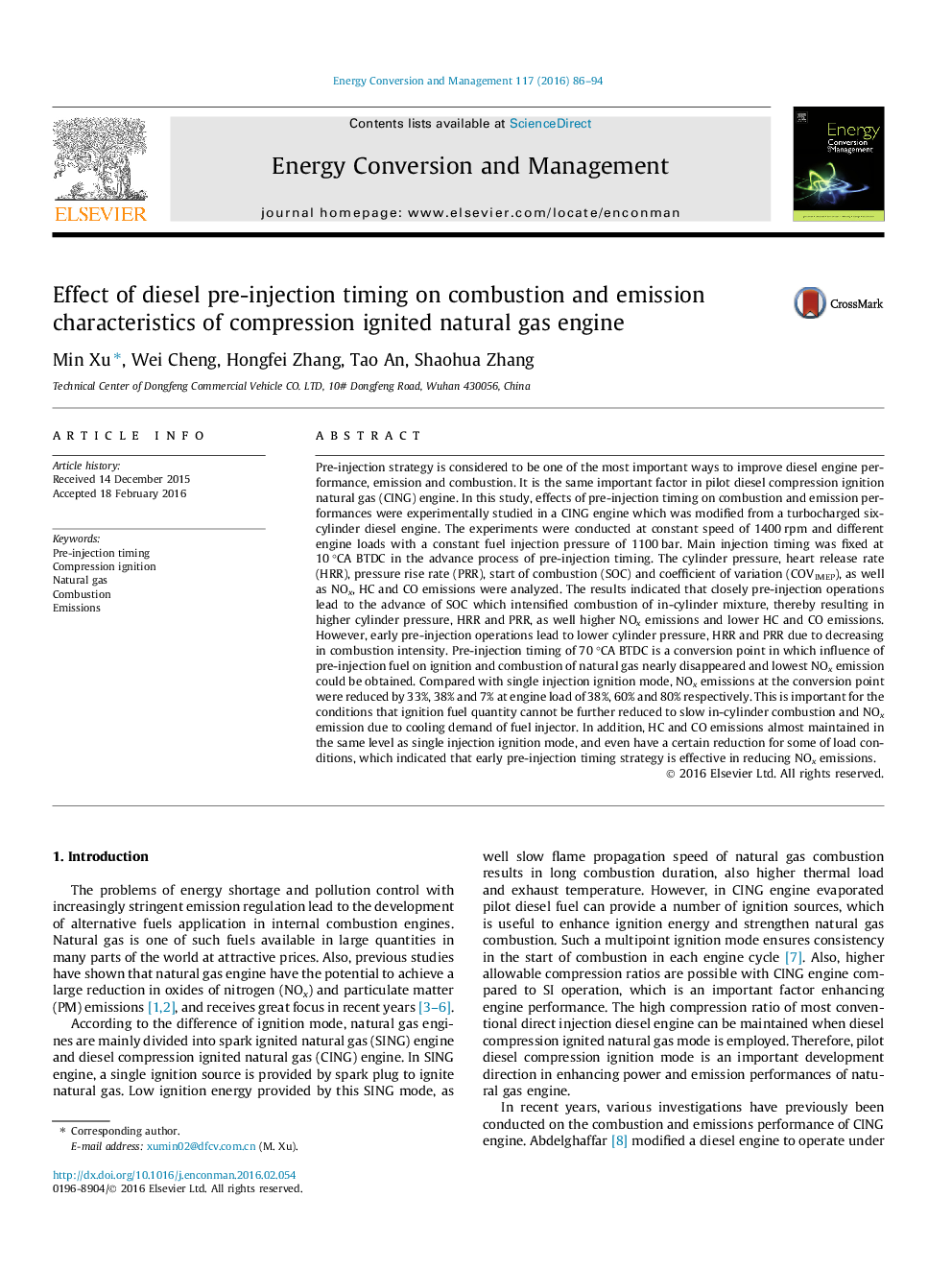| کد مقاله | کد نشریه | سال انتشار | مقاله انگلیسی | نسخه تمام متن |
|---|---|---|---|---|
| 7160879 | 1462845 | 2016 | 9 صفحه PDF | دانلود رایگان |
عنوان انگلیسی مقاله ISI
Effect of diesel pre-injection timing on combustion and emission characteristics of compression ignited natural gas engine
ترجمه فارسی عنوان
تأثیر زمان قبل از تزریق دیزل بر احتراق و ویژگی انتشار گاز فشرده شده گاز طبیعی
دانلود مقاله + سفارش ترجمه
دانلود مقاله ISI انگلیسی
رایگان برای ایرانیان
کلمات کلیدی
زمان پیش از تزریق، احتراق فشرده، گاز طبیعی، احتراق انتشارات،
موضوعات مرتبط
مهندسی و علوم پایه
مهندسی انرژی
انرژی (عمومی)
چکیده انگلیسی
Pre-injection strategy is considered to be one of the most important ways to improve diesel engine performance, emission and combustion. It is the same important factor in pilot diesel compression ignition natural gas (CING) engine. In this study, effects of pre-injection timing on combustion and emission performances were experimentally studied in a CING engine which was modified from a turbocharged six-cylinder diesel engine. The experiments were conducted at constant speed of 1400 rpm and different engine loads with a constant fuel injection pressure of 1100 bar. Main injection timing was fixed at 10 °CA BTDC in the advance process of pre-injection timing. The cylinder pressure, heart release rate (HRR), pressure rise rate (PRR), start of combustion (SOC) and coefficient of variation (COVIMEP), as well as NOx, HC and CO emissions were analyzed. The results indicated that closely pre-injection operations lead to the advance of SOC which intensified combustion of in-cylinder mixture, thereby resulting in higher cylinder pressure, HRR and PRR, as well higher NOx emissions and lower HC and CO emissions. However, early pre-injection operations lead to lower cylinder pressure, HRR and PRR due to decreasing in combustion intensity. Pre-injection timing of 70 °CA BTDC is a conversion point in which influence of pre-injection fuel on ignition and combustion of natural gas nearly disappeared and lowest NOx emission could be obtained. Compared with single injection ignition mode, NOx emissions at the conversion point were reduced by 33%, 38% and 7% at engine load of 38%, 60% and 80% respectively. This is important for the conditions that ignition fuel quantity cannot be further reduced to slow in-cylinder combustion and NOx emission due to cooling demand of fuel injector. In addition, HC and CO emissions almost maintained in the same level as single injection ignition mode, and even have a certain reduction for some of load conditions, which indicated that early pre-injection timing strategy is effective in reducing NOx emissions.
ناشر
Database: Elsevier - ScienceDirect (ساینس دایرکت)
Journal: Energy Conversion and Management - Volume 117, 1 June 2016, Pages 86-94
Journal: Energy Conversion and Management - Volume 117, 1 June 2016, Pages 86-94
نویسندگان
Min Xu, Wei Cheng, Hongfei Zhang, Tao An, Shaohua Zhang,
